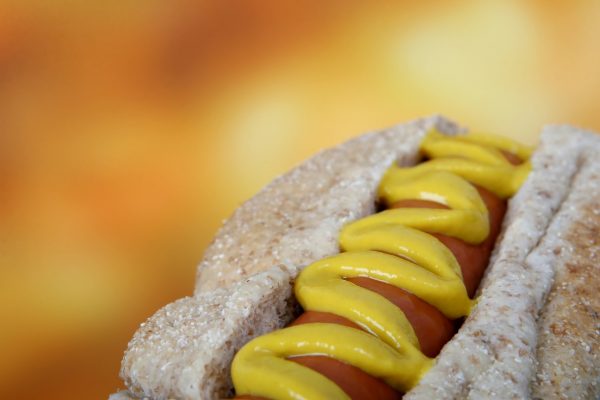There’s nothing quite like topping your favorite food with some ketchup, mustard, or mayo, but most of us don’t spend too much time thinking about how it’s made. Whether or not you were curious about the makeup of your favorite food topping, we’ve taken an in-depth look at the condiment chemistry that gives you these toppings.
Condiment chemistry of ketchup
Ketchup makes the perfect topping for hot dogs, hamburgers, and French fries, but what makes this tomato-based topping really tick? Ketchup is a suspension — a type of mixture that suspends large particles in a liquid. In the case of ketchup, the large particles are blended tomatoes and other seasonings, suspended in water.
This is why you need to shake your ketchup before you use it, too, unless you enjoy coating your food with a thin layer of tomato-flavored water. As ketchup sits, the heavier particles separate from the liquid component of the condiment.
The exact components of your favorite ketchup may vary by brand, but it’s usually made of:
- Tomatoes
- Sugar or sweetener
- Water
- Vinegar
- Seasonings like salt, onion, and garlic

While things like seasonings and sugar will mix well with water, the heaver tomato components will only remain mixed for a short while before they’ll start to settle to the bottom of the container. Shake up your ketchup well!
Mustard: seed to snack
Mustard might be an acquired taste, but that hasn’t stopped it from becoming one of the most popular condiments of all time. So what is the condiment chemistry of mustard?
Mustard is another suspension, similar to ketchup, that uses spices mixed with a liquid component to make a tasty topping. In this case, instead of tomatoes, the primary component is ground mustard seeds — and it takes roughly 1,000 mustard seeds to make eight ounces of your favorite mustard.

Most mustard doesn’t require a whole lot of ingredients — usually, you’ll only see:
- Mustard seeds
- Vinegar
- Water
- White wine
- Spices, such as garlic, turmeric, paprika, and salt
Some specialty mustards might include additional flavors, like lemon, horseradish, or honey, to make honey mustard.
One of the biggest differences between mustard and ketchup is the way the recipe approaches the main ingredient. Ketchup relies on fresh tomatoes, while mustard seeds need to be dried and hulled before they can be ground for use in mustard. Coarse-texture mustard keeps the hulls and seeds together to add more flavor and a grainier texture.
Live for olive oil
Olive oil, as its name suggests, is made from pressed olives — the fresh olives are ground up, pits and all, then pressed or spun to separate the oil from the pulp of the olives. A one-liter bottle of olive oil contains the combined oils from nearly 1,000 individual olives. Oils can also be extracted using artificial chemicals, like hexane, but that tends to produce high quantities of low-quality oil. The best oils are made with traditional mechanical processing techniques.
Olive oil has a variety of applications, from cooking to salad dressings and even in mayonnaise. There’s one thing olive oil doesn’t do, though — mix with water. That’s why you have to shake your favorite balsamic vinaigrette salad dressing well before you can use it — the water molecules in the vinegar and the oil molecules separate as the bottle rests.

Olive oil is also a healthy alternative to vegetable oil. It’s full of monounsaturated fatty acids, which help your body produce more good cholesterol. Plus, it tastes amazing, so it’s a win-win.
What is mayo, anyway?
Sandwiches aren’t complete without some mayo on the bread, but what is the condiment chemistry of mayonnaise? Instead of a typical suspension, mayo mixes oil with water or vinegar. Now, if you were paying attention in the last section, you know oil and water don’t mix. In fact, they repel each other, so how does mayonnaise keep its creamy consistency?
Two words — egg yolks.
Egg yolks contain a protein called lecithin. When emulsified, or well mixed, with the oil before the vinegar is added, it allows the molecules to bind together to create a creamy condiment. This result occurs because the interior of a lecithin molecule is hydrophobic — it hates water, which makes it bond well with the oil molecules — but the exterior is hydrophilic, so it bonds well with the water molecules in the vinegar.

Things to try at home
While making your own condiments might be a bit tricky, here are a couple of experiments you can try at home:
- The Viscosity Race: Which flows fastest — ketchup, mustard, mayo, or olive oil? Set up a “race course” — a board placed at an angle — and set your condiments loose. Make sure you take notes to see who wins!
- They Really Don’t Mix — Try combining different amounts of oil, different types of oil and water, and see if you can get them to mix.
If you’re feeling really adventurous, you can even try making homemade ketchup, mustard, or mayo now that you know their condiment chemistry!
Our favorite sandwiches and snacks wouldn’t be the same without condiments. Let us know what your favorite condiment or combination is!








